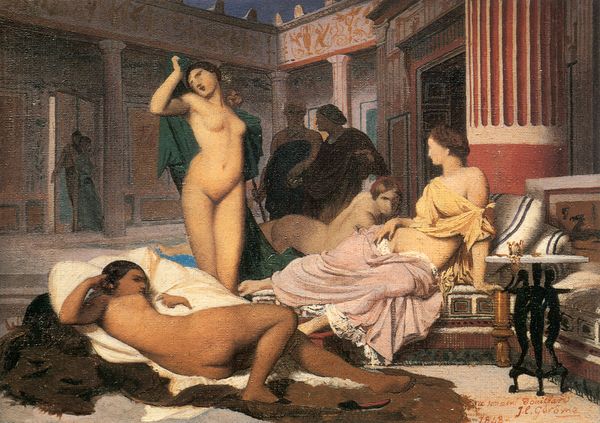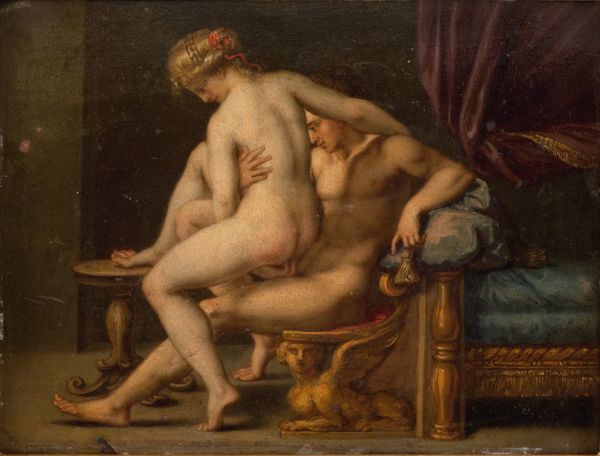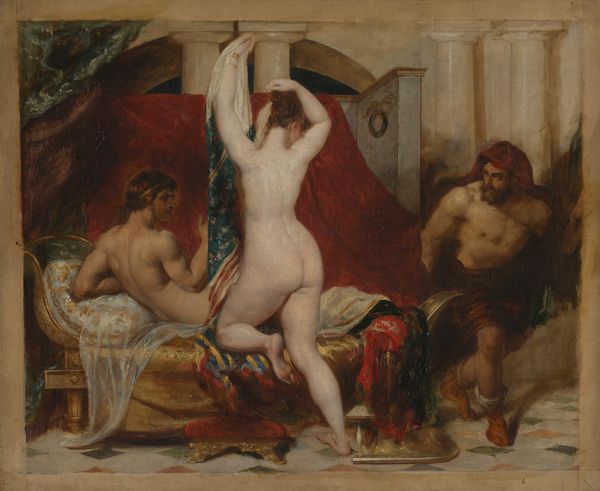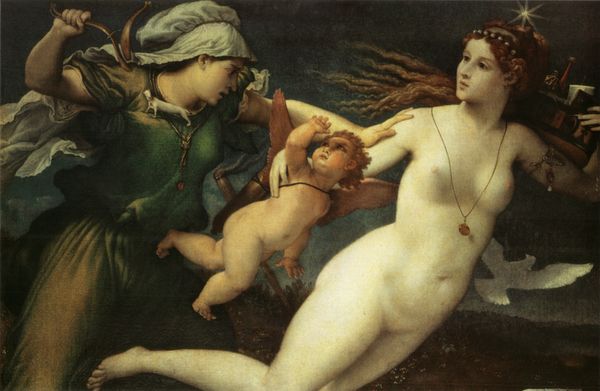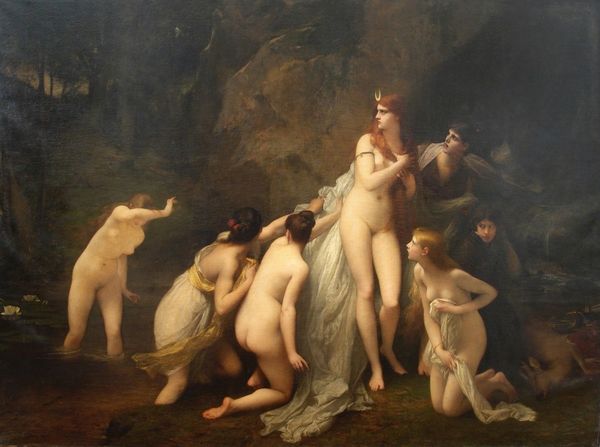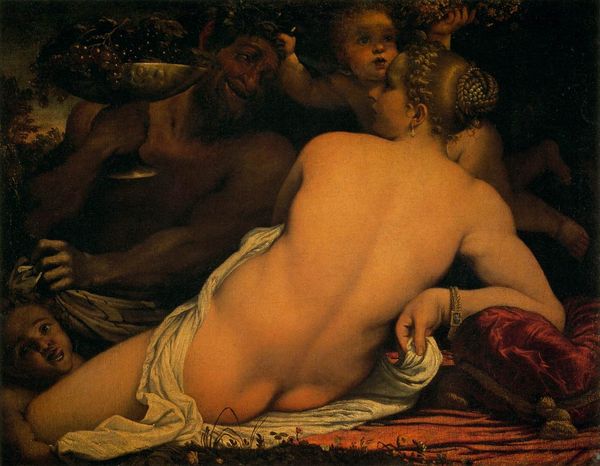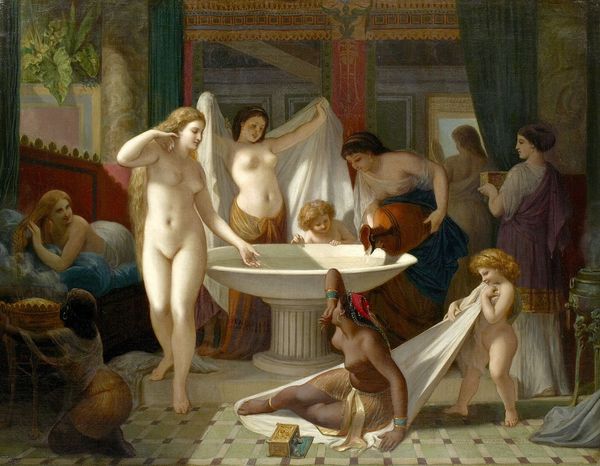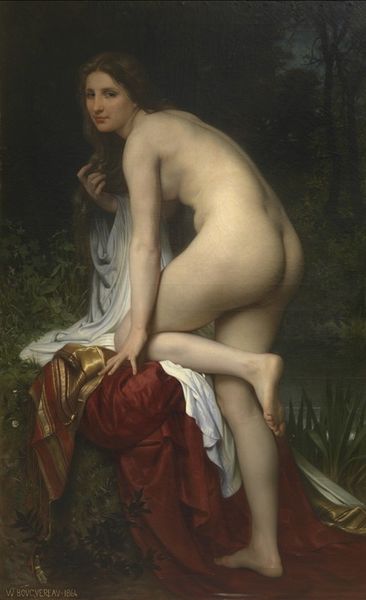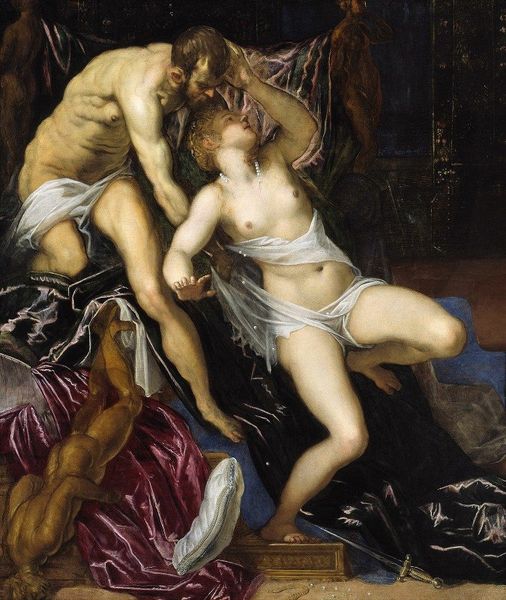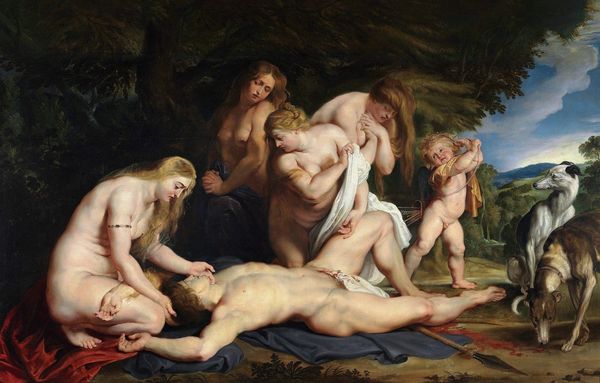
painting, oil-paint
#
figurative
#
neoclacissism
#
painting
#
oil-paint
#
greek-and-roman-art
#
painted
#
figuration
#
genre-painting
#
history-painting
#
academic-art
#
realism
Copyright: Public Domain: Artvee
Editor: This is Jean-Léon Gérôme's *Young Greeks Attending a Cock Fight,* painted in 1846 with oil paints. It's a pretty classical scene, but something about it feels unsettling. What do you see when you look at it? Curator: Well, immediately I think about how this seemingly innocent depiction of youthful pastime subtly reinforces prevailing views about cultural superiority. Gérôme painted this during a time when European nations were solidifying their colonial empires, so representing the Greeks engaging in, arguably, a barbaric activity subtly underscored a justification of this social hierarchy. Editor: That's interesting. I hadn't considered it from that perspective. Does the choice of subject matter tie into academic art standards, too? Curator: Precisely! Academic art often looked to classical antiquity for inspiration. However, by highlighting this kind of "uncivilized" element, the painting actively contributed to constructing a particular historical narrative. It also prompts us to consider which histories get told and by whom, influencing public perceptions. Are we meant to consider this reality, or some other constructed narrative? Editor: It makes you wonder if this idealized vision actually reflects real historical practices, or is a way to other a group by focusing on a minor aspect of their culture. So much of what we view is politically charged... Curator: Absolutely. The image’s visual appeal often overshadows its cultural and political implications. Even a seemingly benign image like this holds layers of socio-historical significance. Editor: It’s definitely given me a new way to think about genre paintings and history paintings! Thanks for sharing your insight!
Comments
No comments
Be the first to comment and join the conversation on the ultimate creative platform.
